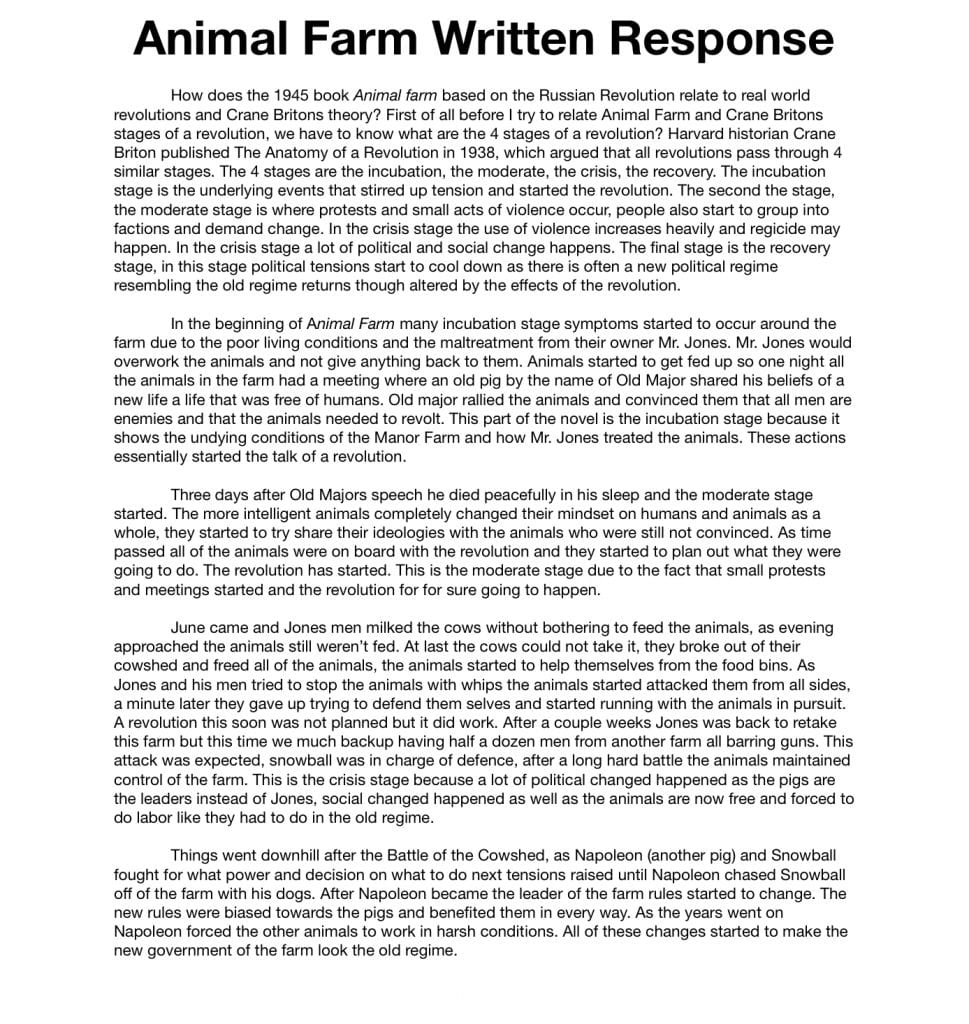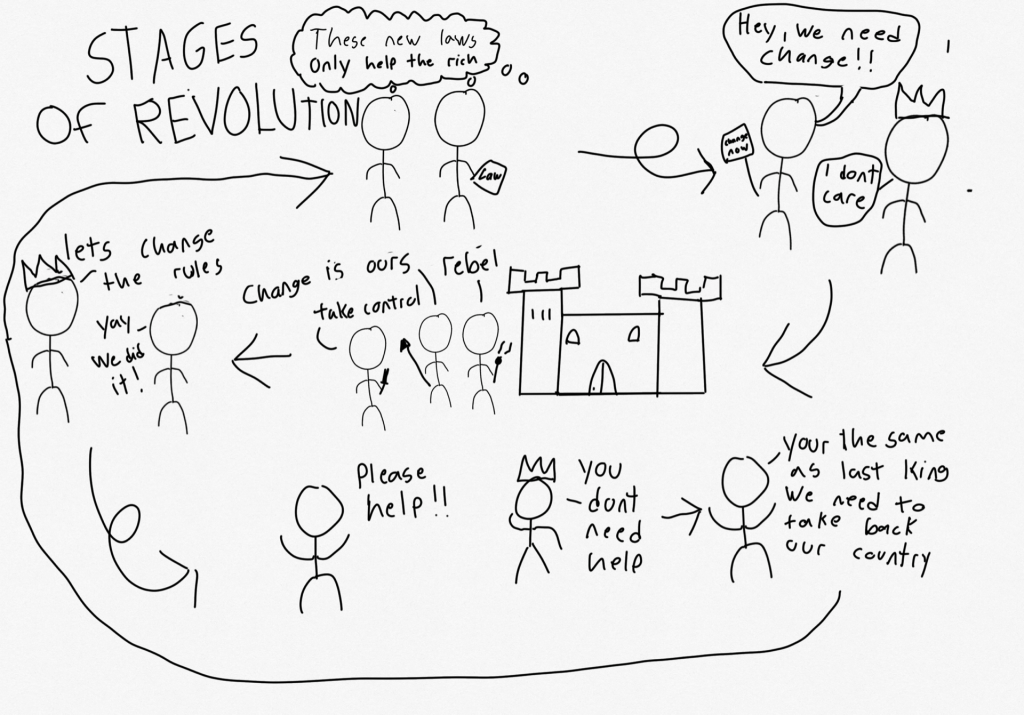Have you ever wondered if the American revolution was effective, or was it just a waste of time? In this most recent project, we answered this in the courtroom. This project looked into how revolutions happen, what they do, and why they happen. As a result, we knew everything about our revolution and courtroom work and function by the end of this project.
Nation X
We started this project by partaking in a country called nation X. This simulation aimed to equality out of the segregated nation; the nation was separated into four classes of people, only two of those groups had rights. Group A was the lowest class in the country, getting only 1$ dollar per day and having next to no rights, Group B was the middle class they were making merely 5$ dollars per day, and they had a few rights, Groups C and D had rights to do anything they wanted and had absolute power. As time went on, groups A and B started to make plans to revolt and go on strike, the groups C and D started to realize the problem. My group and I kept fighting for rights and equality; the whole civilization became a lot more progressive. We ended up having a meeting between all of the groups to discuss how the future of society would progress. In the end, the nation hasn’t been fully equal, but we had the right to vote for new laws, make our own decisions and have freedom of speech. In this experiment, I realized that an equal and just society is needed to stop people from rebelling against their government. At the end of this activity, we wrote about how we interpreted equality and just civilization. This is mine.
Animal farm & Crane Brinton
Revolutions can change society in many different ways, and they can fix social problems in the nation or create all-out wars. In the first few weeks of this project, we read, discussed the 1945 novel Animal Farm, This novel elaborated on how revolutions progress; it showed me how revolutions could be both good and bad for the people involved. The book showed the fall of a corrupt government and the rise of another government that adapted the old ways. We then had to write three paragraphs on how the story of Animal Farm connected to Crane Brinton’s different stages of the revolution
Around this time of the project, we also learnt about the stages of a revolution and Crane Briton’s theory. We learnt that there are four stages to every revolution, the incubation stage, the underlying events. The moderate stage is the early events of the revolution; the crisis stage is the stage where the most violence and regicide happens, and the final stage is the recovery stage, which is when the reign of terror ends and violence diminishes. After learning about the stages of a revolution, we had to create a diagram representing the four stages.
American revolution
After learning more about revolutions in general, we got put into revolution groups (there were eight groups total, 2 for each of the four revolutions (French, American, Haitian, and Xinhai). In the end, I was put into the prosecution group for the American revolution, meaning I was arguing for the Americans revolution being wrong and unjustified. We then started to research a group to each create a graphic organizer. I chose to create a mind map of my graphic organizer as I found a mind map very easy to read, understand and comprehend. We had to incorporate many different things into our graphic organizer, such as
• Revolution Name & Date
• Underlying Conditions (Incubation Stage)
• Key Triggers (What was the tipping point of this revolution? Crisis Stage)
• Key Characters (Name at least two individuals of note)
• Effectiveness of the Revolution
• Ineffectiveness of the Revolution
- Continuity and Change (How did this revolution change this society? What stayed the same?
As we progressed through this project, we learned more about our specific revolution. We read countless textbooks and websites to build our understanding and finish our graphic organizers. Once everyone was done, we went back into our groups; we revised and learned from each other’s graphic organizers. Once everyone in our groups knew almost everything about the American revolution, we met with the other American revolution group to share our ideas, create one extensive timeline of the revolution, and list all of the most important events. Since we were fighting for if the revolution was good or not in court, we had to create an affidavit, choose a witness who would represent our cause and make questions for the opposing group’s witness. Eventually, we switched our affidavits and created our cross-examination questions and script for the final presentation. For the next week, all we did was memorize our lines by heart and practice so we could have a perfect performance
Once everyone was done, we went back into our groups; we revised and learned from each other’s graphic organizers. Once everyone in our groups knew almost everything about the American revolution, we met with the other American revolution group to share our ideas, create one extensive timeline of the revolution, and list all of the most important events. Since we were fighting for if the revolution was good or not in court, we had to create an affidavit, choose a witness who would represent our cause and make questions for the opposing group’s witness. Eventually, we switched our affidavits and created our cross-examination questions and script for the final presentation. For the next week, all we did was memorize our lines by heart and practice so we could have a perfect performance
I’m very happy with how our presentation went as we worked hard, and it paid off. Unfortunately, the opposing group won the trial, but we showed some great points, and it was a great court case. You watch the entire court case here!


